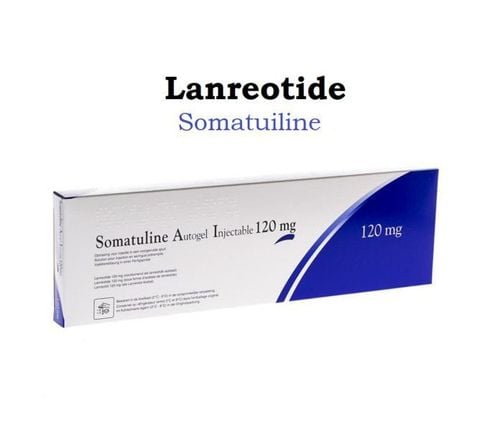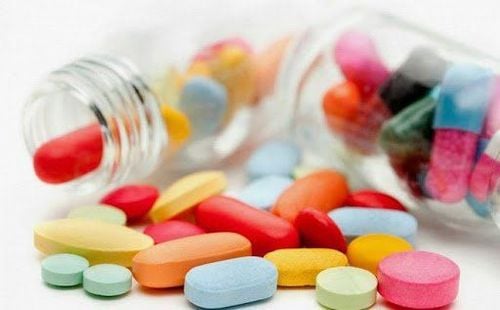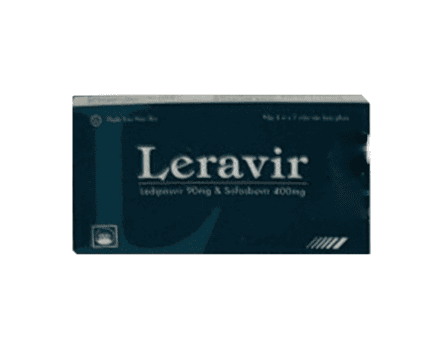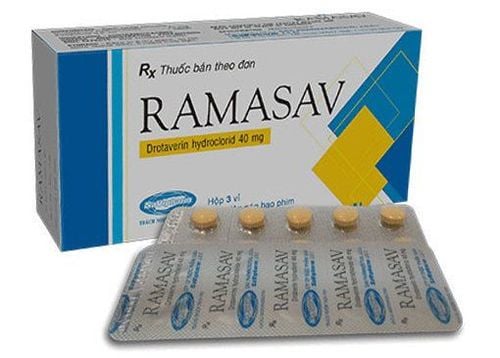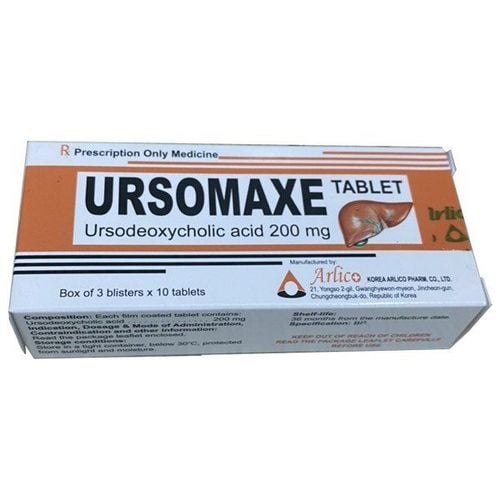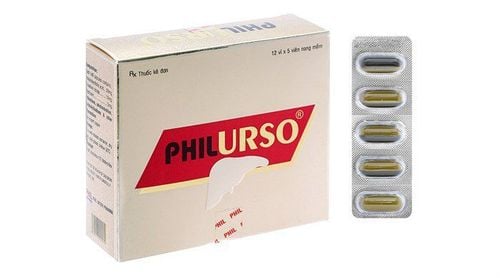This is an automatically translated article.
Prohepatis drug is often used in the treatment of some liver diseases such as gallstones, primary cirrhosis,... So what is the use of Prohepatis and how is it used?1. Effects of the drug Prohepatis
Prohepatis 200mg drug is made in the form of soft capsules, the main ingredient in each tablet is Ursodeoxycholic acid 200mg.Ursodeoxycholic acid (UDCA) is a type of bile acid, usually present in only a very small percentage (about 5% of the total bile acids). When oral ursodeoxycholic acid is used to increase this ratio and can become the main bile acid (40 - 50%),
ursodeoxycholic acid reduces the excretion of bile lipid cholesterol, mainly due to its effect on reducing cholesterol absorption from intestine. Ursodeoxycholic acid does not appear to affect cholesterol or bile acid biosynthesis. Ursodeoxycholic acid gradually dissolves cholesterol from gallstones.
Prohepatis 200mg is indicated for use in the following cases:
Treatment of unenhanced cholesterol-rich gallstones in patients with normal gallbladder function. Treatment of primary biliary cirrhosis. Hepatobiliary disorders due to cystic fibrosis in children aged 6 to under 18 years. Prohepatis 200mg is contraindicated in the following cases:
Cholecystitis or acute cholangitis. Biliary obstruction: Obstruction of the common bile duct or dislocated sac. Frequent biliary colic. Decreased gallbladder contractility. Prohepatis should not be used to dissolve contrast-enhanced calcified gallstones. Prohepatis should not be used in patients who are pregnant, or may become pregnant. Prohepatis should not be used in patients with active gastric or duodenal ulcers, or with intestinal or hepatic disorders that interfere with the flow of bile from the liver to the intestines, such as ileostomy and stoma, ileitis. terminal colon, severe, acute and chronic liver disease, intrahepatic and adnexal cholestasis. Patients with hypersensitivity to any component of the drug. Precautions when using Prohepatis:
Should have medical supervision when taking Prohepatis: During the first 3 months of treatment with Prohepatis, liver function parameters AST (SGOT), ALT (SGPT) and GT should be monitored. every 4 weeks, then every 3 months. In addition to helping identify responders and nonresponders in patients on treatment for primary biliary cirrhosis, this monitoring also helps detect potential liver failure early, especially in patients with biliary cirrhosis. progression development. When using Prohepatis to dissolve cholesterol gallstones: To assess the treatment process and promptly detect gallstone calcification, depending on the stone size, the patient should have an X-ray (with oral contrast) bag. General biliary tract in the upright, supine position (ultrasound) 6 - 10 months after initiation of treatment with Prohepatis. Prohepatis should not be used when the gallbladder is not visible on the x-ray. Female patients taking Prohepatis to dissolve gallstones should use non-hormonal methods of contraception because oral hormonal contraceptives may increase the risk of gallstone formation. When Prohepatis is used for the treatment of advanced primary biliary cirrhosis: Very rare cases of decompensated cirrhosis after treatment discontinuation have been observed. In patients with primary biliary cirrhosis, there have been rare instances when clinical symptoms may worsen at the start of treatment, such as increased pruritus. If this happens, you should continue treatment with one Prohepatis tablet per day and then increase it. If diarrhea occurs, you need to reduce the dose and in cases of persistent diarrhea you should stop taking the drug. Diets high in calories and cholesterol should be avoided during treatment with Prohepatis.
2. Dosage and how to use Prohepatis
Prohepatis drug is used orally, taken after meals.Dosage of Prohepatis drug should be according to the doctor's prescription. The recommended dose of Prohepatis for each case is as follows:
Dissolve cholesterol-rich gallstones without contrast using a dose of 8 - 10 mg/kg/day (2 or 4 tablets/day for most patients). The drug should be divided into 2 doses after meals, with at least half of the dose taken after the evening meal. The duration of treatment to dissolve gallstones is usually between 6-24 months, depending on the size and composition of the stone. Patients should be regularly monitored for treatment with X-rays and continue to be monitored for 3-4 months when the gallstones are gone.
After successful treatment, gallstones can still recur. The time required for subsequent dissolution of gallstones may be increased if the drug is discontinued (3 to 4 weeks) during treatment.
Dosage of Prohepatis for elderly patients and children is based on body weight (8 - 10mg/kg/day).
Obese patients may need higher doses of Prohepatis (up to 15 mg/kg/day)
Treatment of primary biliary cirrhosis 10 - 15 mg/kg/day (2 or 6 tablets/day) for most patients) should be divided into 2 to 4 doses. Children with severe cirrhosis from 6 to under 18 years old use Prohepatis at a dose of 20mg/kg/day, divided into 2-3 times, if necessary the dose can be increased to 30mg/kg/day.
3. Side effects of the drug Prohepatis
You may experience some side effects while using Prohepatis.Gastrointestinal disorders: Common: Diarrhea in clinical trials. Very rare: Severe right upper abdominal pain occurs during treatment for primary biliary cirrhosis. Hepatobiliary disorders: Very rare: Calcification of gallstones. Decompensated cirrhosis during the treatment of primary cirrhosis. Skin and subcutaneous tissue disorders such as urticaria are very rare. When experiencing side effects of Prohepatis, you need to stop using it and notify your doctor or go to the nearest medical facility for timely treatment.
4. Interaction of Prohepatis with other drugs
Prohepatis should not be taken concurrently with Colestipol, Cholestyramine, activated charcoal or antacids containing Aluminum hydroxide and/or Smectite (aluminium oxide), because these substances bind to UDCA in the intestine, thereby reducing its absorption and effectiveness. medicine. If it is necessary to take these medicines, they must be taken at least 2 hours before or after taking Prohepatis.Prohepatis may affect the intestinal absorption of cyclosporin. In patients being treated with cyclosporin, the physician will carefully monitor the blood levels of cyclosporin, adjusting the dose if necessary.
In isolated cases, Prohepatis may decrease the absorption of Ciprofloxacin.
Estrogen hormones, estrogen-containing oral contraceptives, and cholesterol-lowering drugs such as clofibrate increase cholesterol secretion in the liver and can therefore form gallstones, affecting the effect of Prohepatis.
Please dial HOTLINE for more information or register for an appointment HERE. Download MyVinmec app to make appointments faster and to manage your bookings easily.




